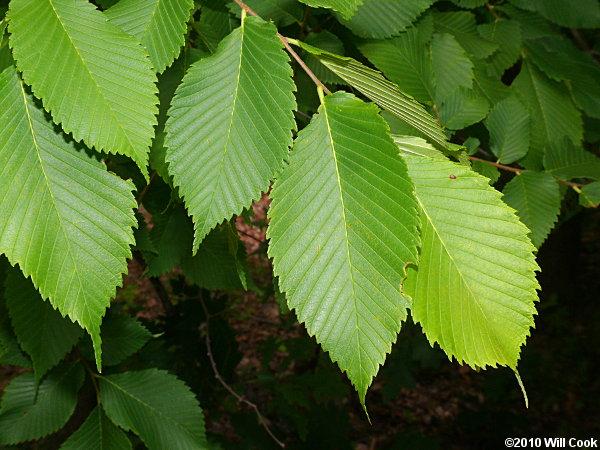
Slippery Elm is a fairly common medium-large tree, named for its mucilaginous inner bark. Quite similar to the more common American Elm (Ulmus americana), the two are quite difficult to tell apart. There is no difference in the mucilage of the twigs or leaves, as far as I can tell.
Leaf shape is a clue: note how the broad leaves abruptly narrow to a long, thin point. The leaves of Slippery Elm tend to be a little more coarsely toothed. Habitat is also a clue: Slippery Elm is most abundant in rocky areas with basic bedrock, while American Elm is common in bottomland forests without regard to pH. Slippery may also occur in bottomlands, so habitat is not completely reliable to separate the two.
Caswell Co., NC 5/21/10.
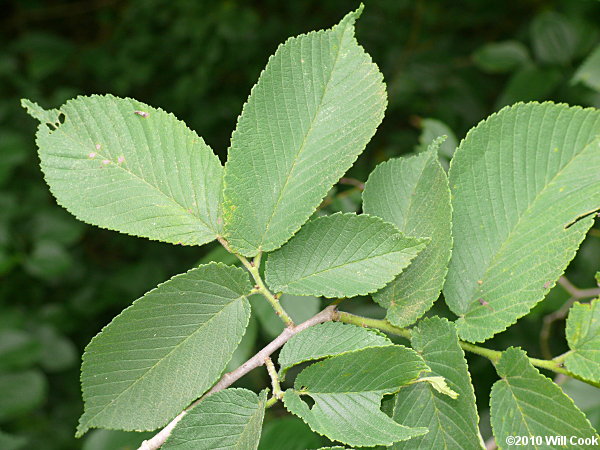
The leaves are generally very rough-hairy above. American Elm leaves are on average smoother and shinier, but may also be rough above. Note again the abruptly acuminate leaf shape.
Caswell Co., NC 5/21/10.
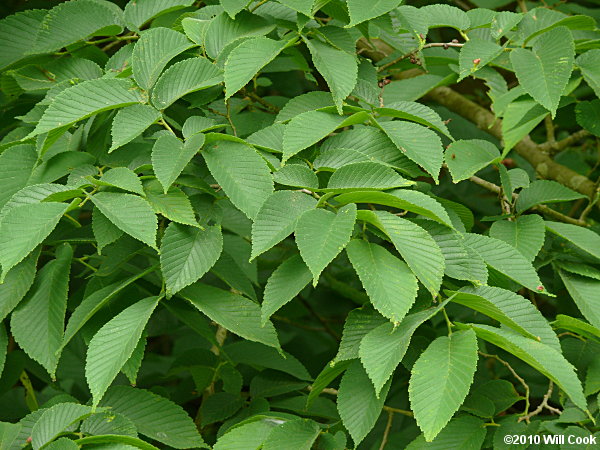
An alternate common name is Red Elm.
Caswell Co., NC 5/21/10.
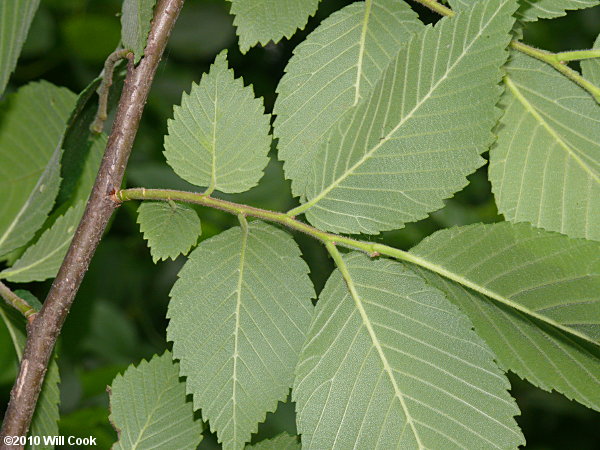
Leaf undersides are hairy with prominent veins.
Caswell Co., NC 5/21/10.
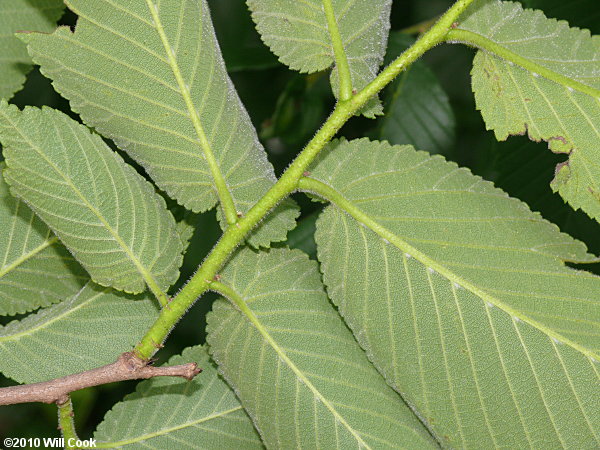
Caswell Co., NC 5/21/10.
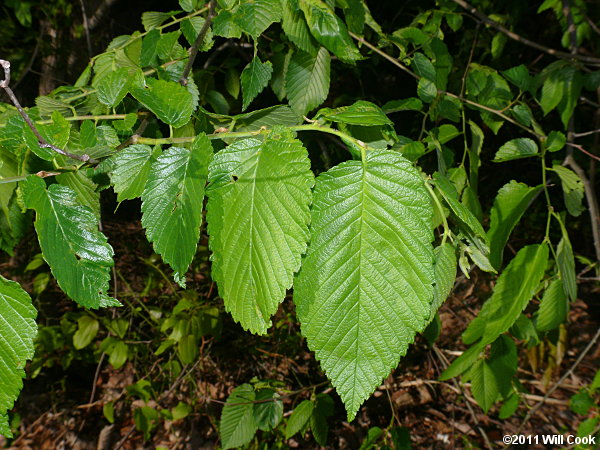
Crowder's Mountain State Park, Gaston Co., NC 4/16/2011.
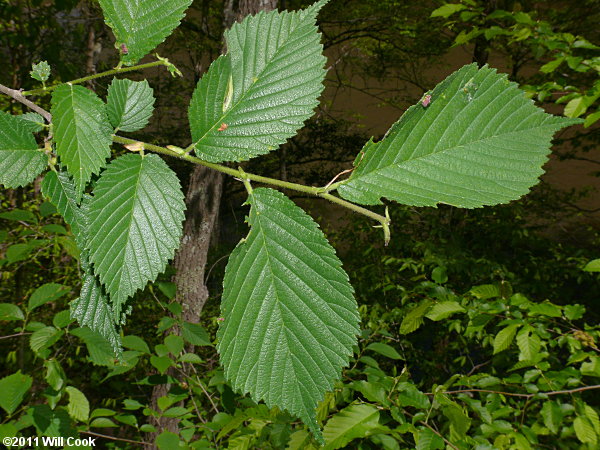
Uwharrie River slopes, Montgomery Co., NC 4/17/2011.
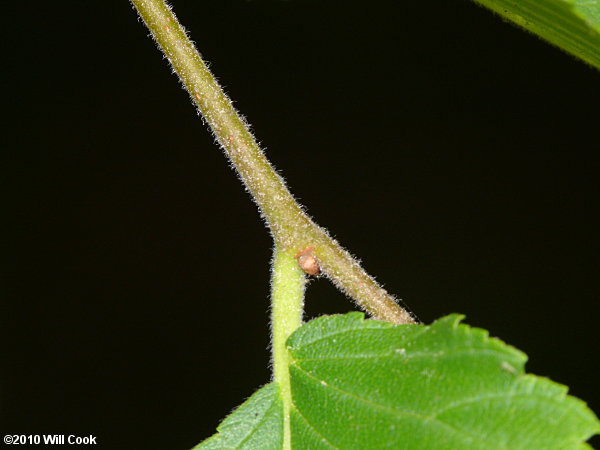
Branches are hairy.
Caswell Co., NC 5/21/10.
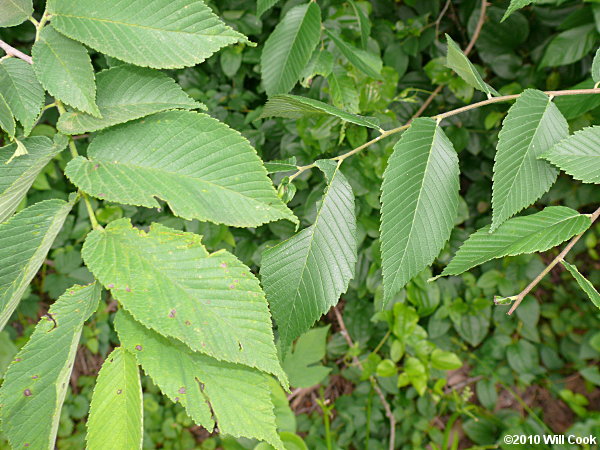
Comparison of Ulmus rubra (left) and Ulmus americana (right) growing together at the intersection of a basic slope and a bottomland. Note the difference in leaf shape, with American Elm coming to a more gradual point. American Elm also tends to be darker green and shinier above.
Caswell Co., NC 5/21/10.
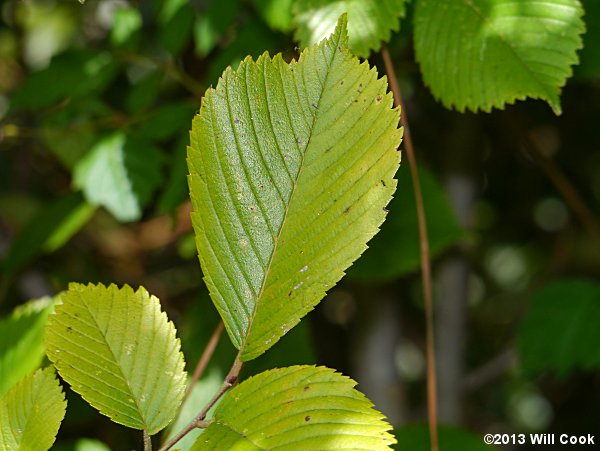
Slippery Elm is rare in the Coastal Plain, where it occurs on outcroppings of calcium-rich marl, such as here on the shore of Lake Waccamaw.
Lake Waccamaw, Columbus Co., NC 9/28/2013.

Fallen fruits (samaras) on Carpinus leaf. The samaras have hairless margins and are not notched at the tip.
Durham Co., NC 3/25/2012.
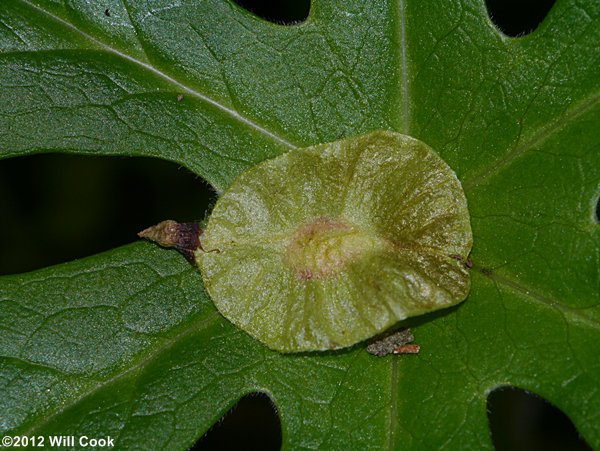
Fallen fruit (samara) on Podophyllum leaf.
Durham Co., NC 3/25/2012.
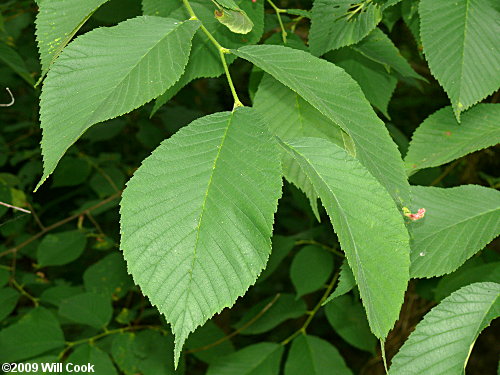
Granville Co., NC 5/16/09.
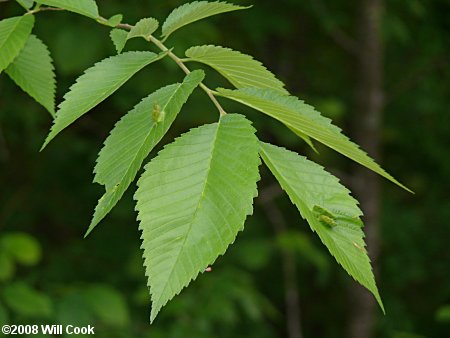
The leaf bases are very lopsided, unlike those of Winged Elm (U. alata).
Durham Co., NC 5/3/08.
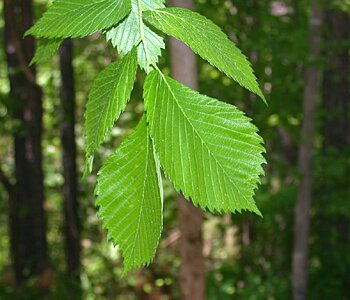
The leaves are rough above, while those of the very similar American Elm (U. americana) may be rough or smooth above, and the leaves are longer and broader than those of Winged Elm (U. alata).
Durham, NC.
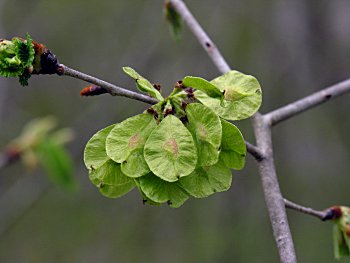
The flowers, which are produced in March-April before the trees leaf out, are bright green, unlike the dull reddish tinged flowers of the Winged Elm. Slippery Elm samaras are hairless and not notched at the tip; those of American Elm are also green but have ciliate margins and are conspicuously notched at the tip.
Botetourt Co., VA 4/19/05.
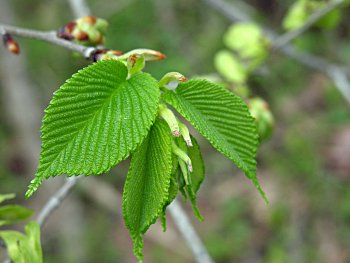
Young leaves.
Botetourt Co., VA 4/19/05.
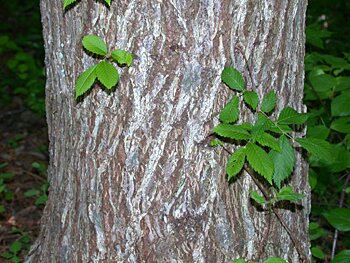
Bark of a medium-sized tree. Becomes more ridged with age.
Durham, NC.
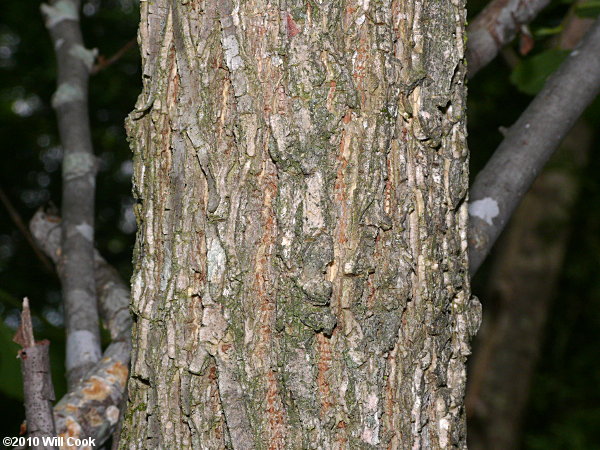
Bark of a medium-sized tree. If you cut a cross section of the bark of American Elm, you'll see alternating pale and dark bands, lacking in Slippery Elm.
Caswell Co., NC 5/21/10.
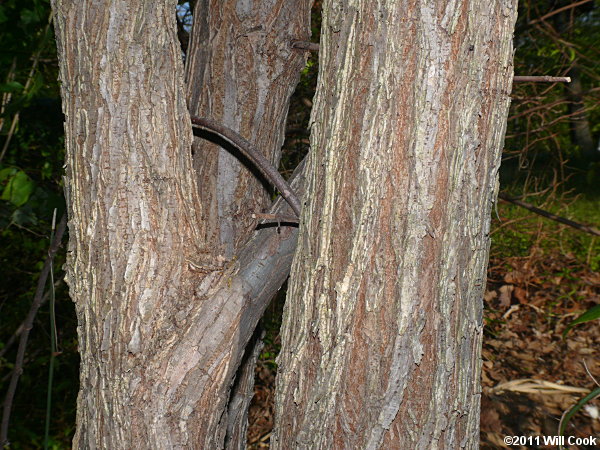
Crowder's Mountain State Park, Gaston Co., NC 4/16/2011.